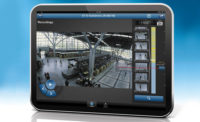Today’s megapixel cameras provide a number of benefits, including their ability to enhance situational awareness by expanding areas of coverage with fewer physical cameras, which can also significantly reduce overall costs associated with both equipment and labor.
But megapixel cameras also require a bit more planning than conventional IP cameras to ensure that they are properly set up and integrated into new and existing systems, says Bill Brennan, vice president, security division, Panasonic i-PRO Sensing Solutions Corporation of America, Chicago. “As a result, manufacturers often tout easy installation as a key feature of their megapixel cameras. This is often the result of the tools they provide to support camera selection and installation processes.”
Video surveillance installations are often difficult by their very nature.
“The technology is often not easy to work with,” says Keith Drummond, senior director of sales, IDIS America, Coppell, Texas. “Loading IP addresses for each camera, configuring one manufacturer’s hardware with another developer’s software and getting the camera network to ‘talk’ to the customer’s network are just a few of the challenges.”
When budgeting for video surveillance cameras, there are multiple factors to consider that affect cost beyond the camera itself, including the cost of installation and the cost to service or upgrade a unit in the future.
“While configuring a small number of cameras will likely have little impact on cost, the labor involved in installing and servicing hundreds of cameras can be significant,” says Aaron Saks, product and technical manager, Hanwha Techwin America, Teaneck, N.J. “A modular approach to camera design is necessary to reduce the installation costs and long-term maintenance of such cameras.”
Advice for Simplifying From the Start
“The first step is ensuring employees are appropriately trained on the equipment being installed. This can help decrease installation time, minimize configuration mistakes, diminish reliance on the manufacturer’s technical support and reduce time delays caused by product returns that are needed because of technician errors. Documentation is also important during installation. Creating a site inventory is a crucial part of any installation, as it provides technicians with key information needed for return site visits, routine maintenance, troubleshooting and upgrade compatibility when needed. The inventory should include product serial and model numbers, firmware versions of cameras installed and user account information, such as passwords.” — Paul Garms, Bosch Safety and Security
“Design your projects with simplicity, avoiding future costs and complexity in mind from the start. The more use of multi-sensor cameras that can be made the better — for both the customer and the installer. A panoramic 180-deg. fixed-view or adjustable view multi-sensor camera can typically replace four or more fixed view cameras in many projects. This means at least three fewer cable runs are required to cover a similar coverage area with a multi-sensor, at least three fewer camera software licenses for most VMS systems and only one IP address to manage instead of three or more. That all combines to save installation time, reduce both installation and operational cost and often provide better, continuous coverage than single sensor devices. It also reduces the physical footprint and impact of the project, with a single, compact and low profile camera from the best manufacturers that can blend into be background, instead of having multiple devices omnipresent in the scene.” — Jeff Whitney, Arecont Vision Costar
Unexpected technical, logistical or workforce issues, or even prolonged preliminary work, can extend project timelines and budgets and reduce profitability. This is why ease of installation becomes an important part of product selection. If labor costs are high, or are more expensive than a systems integrator planned, money can be lost on a project, Saks says. If a systems integrator includes a high estimate for labor in a project bid, the overall bid could be too high and could cost the project.
Despite the advanced capabilities of today’s cameras, one of the primary areas integrators run into challenges is the physical aspects of a deployment.
“Cameras that have multiple parts to disassemble, screw heads that are difficult to reach, as well as lack of access to Ethernet ports are some of the most difficult to install,” says Ross White, product manager, Illustra cameras from Johnson Controls, Milwaukee.
One of the most basic issues that can impact a camera’s installability is the design of the enclosure, says Jeff Whitney, vice president of marketing, Arecont Vision Costar, Glendale, Calif.
“Since cameras are typically installed high overhead, it is important that the camera has been well designed with the installer in mind,” he says. “For example, simple installation of a base, box or plate, easily connecting the IP cable to the camera itself, and supporting PoE so as to not require external power, all ease the process.”
Cameras equipped with magnets, harnesses, hinged base plates and other features allow the technician to do many things with one hand while suspended in the air on a ladder or lift.
“You absolutely have to have things like fasteners so something doesn’t fall out when you’re trying to install it and you have to have elements that allow you to capture things that could easily fall out of a camera,” says Kevin Saldanha, principal product manager, Pelco, Fresno, Calif. “If the lower dome is being installed, you need an element that keeps it captive to the box of the camera module so it doesn’t drop off when you’re setting the field of view.”
Not having all the necessary mounting hardware such as bolts and anchors can also delay and complicate installations, leading to increased costs.
“The installer typically goes to the site and realizes they need to purchase more accessories, especially for installations to masonry where there isn’t a lot of room for the pigtail cable jacks that most IP cameras come with,” says Tin Eng, product manager, Speco Technologies, Amityville, N.Y.
To avoid this, it’s important to verify everything before going to a site, says Neil Roberts, security director, West, at FLIR Systems Inc., Wilsonville, Ore. “Prior to installation, open the camera box and make sure the applicable installation tools are included. Power up the IP camera to ensure it is working optimally and become familiar with the installation manual. Write the IP address of the camera on the box and the location where it needs to be installed. Ensure any j-box adapter plate is included in the box. If mounting a camera outdoors, ensure proper mounts are ordered and planned out. If you’re not familiar with the camera and mount brand, build a prototype prior to installation,” he advises.
Planning Checklist
Seasoned integrators know camera installations have to be planned well in advance to account for the many variables from one site to the next. Because of this, Panasonic’s Bill Brennan says general site planning should include:
- An assessment of each camera site and the intended coverage area
- The amount of available light during different times of the day
- The amount of available bandwidth for full and partial image transfer over the network
- Storage requirements for each mode of resolution
Regardless of how complete this checklist may be, there is always the unknown, which can cause headaches.
“Things like the actual availability of the specified and approved product to be installed — versus stated availability — can play havoc with scheduling,” Brennan says. “Being that most integrators specify products they are familiar with, the need for a last-minute product substitution can cause issues due to a technician’s lack of product familiarity.”
With software tools, integrators can start the setup and pre-configuration in the office without even having the cameras present. Using project plans and a set of IP addresses and passwords from the end user, the integrator can enter or upload all of these details, as well as camera names and locations, directly into the app. This fast, simple project set-up creates a set of virtual cameras and eliminates the need for pre-configuration and labelling.
“When it comes to mounting and installing cameras, getting the job done faster and more accurately can greatly improve the integrator’s bottom line,” says Paul Garms, director of regional marketing, Bosch Security and Safety Systems, Fairport, N.Y. “Cameras that separate the mounting hardware from the imaging module allow integrators to take advantage of lower-cost labor to pull cable and to install the mounting or base plates.”
Then when the integrator’s technicians arrive, they can make the cabling connections, and select and attach the imaging module with the desired resolution to complete the product installation in less time.
“This can provide significant time savings — up to 30 percent — and the products can transfer directly from the manufacturer’s warehouse to the client’s location just in time for installation,” Garms adds. “Once the cameras are physically installed on site, scanning a QR code that contains the camera’s MAC address matches the virtual camera to the real camera, and the integrator can upload the predefined settings to the camera.”
Ideally, Whitney says, cameras should be remote focus/zoom capable, so they only need to be mounted and pointed from the ladder or lift.
“The installer can then focus the camera from the safety of the ground, saving time, frustration and reducing the risk of falling or dropping the device,” he says. “When an adjustable view multi-sensor is being installed, adding the capability to move each sensor remotely further reduces installation time, and allows view adjustments without the need for a ladder or lift.”
In fact, most of the challenges of high-megapixel and multiple IP camera installations are now handled through tools on a web browser or PC app.
“The ability to upgrade multiple cameras’ firmware or adjust IP addresses from a single interface has helped installers be efficient and productive,” says Greg Tomasko, applications engineering lead, Honeywell Security, North America, Melville, N.Y.
Cameras themselves have also gotten considerably easier to configure. Auto-focus and motorized zoom lens features mean there is no longer a need to carry monitors up a ladder or rely on two-way radio conversations to get everything into focus.
“Not only is it more accurate than the old manual method, it’s also quite a bit safer not having to focus your attention on the camera while trying not to fall off the ladder,” says Erron Spalsbury, sales support manager, 3xLOGIC, Fishers, Ind.
The most impactful tools for integrators are remote capability and configuration software, which have combined to change the game in terms of controlling time and costs when installing. And while not all of these tools and tactics apply to every installation, they can serve as a starting point for integrators.
“Even saving a few minutes per camera on installations can create substantial savings,” Saks says.
More Online
“PTZs: Valuable Tool or Obsolete Technology?”
www.SDMmag.com/ptzs-valuable-tool-or-obsolete-technology
“5 Critical Factors for Video Power & Transmission Success”
www.SDMmag.com/critical-factors-for-video-power-transmission-success
“Practical Advice for Getting Video Power from Point A to Point B”
www.SDMmag.com/practical-advice-for-getting-video-power-from-point-a-to-point-b



